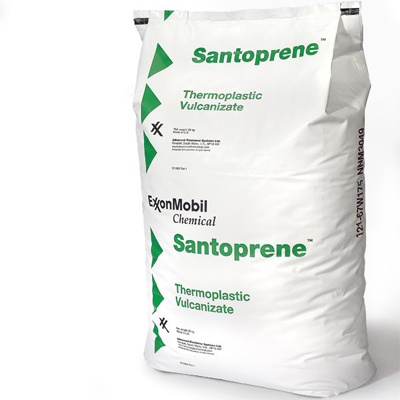Highly resilient Santoprene thermoplastic vulcanizate for automotive Sealing systems
Krishnan Iyer, Bhavesh Shah, Antonios Doufas, ExxonMobil Chemical
Thermoplastic elastomers (TPE) are a class of materials that combine the advantages of a rubber, such as excellent compression set for good sealing, with the processability of conventional thermoplastics. Thermoplastic vulcanizate (TPV) is a subset of TPEs produced from a blend of vulcanized-crosslinked rubber finely dispersed in a continuous thermoplastic matrix. TPVs are produced by dynamic vulcanization, whereby a rubber is cured/ vulcanized within a thermoplastic polymer while the polymers are undergoing intimate mixing or mastication at elevated temperatures. Elasticity, tensile properties and hardness of the TPV are controlled by the ratio of the harder thermoplastic phase to the softer rubber phase. It is well known that TPVs exhibit the advantageous sealing properties of conventional cured rubber, excellent physical properties, good high temperature resistance and outstanding chemical resistance. Due to these benefits Santoprene TPVs have become a workhorse material for a variety of automotive sealing applications. The applications for TPVs in automotive sealing include glass run channels, dynamic seals, cowl vent grille seals and outer belt line seals. (Santoprene is a trademarked product of ExxonMobil Chemical.)
Santoprene TPV-based sealing systems continue to grow and offer advantages compared to conventional thermoset-based sealing systems, such as processing without vulcanization. In addition, co-extrudability with other thermoplastic polymers not only reduces cost, but also achieves beneficial properties such as low friction, high gloss, and good scratch and mar resistance. TPV processing comes at substantially lower costs than thermoset rubber. For example, a plant that manufactures TPV-based weatherseals requires only about one third of the space of comparable EPDM-based lines, lowering facility and overhead costs (ref. 1). Compared to thermoset EPDM, TPV has lower material density, and with design optimization, it can produce parts with similar compressive load deflection with thinner and lighter profiles. For instance, weatherseals made with Santoprene TPV can be 20% lighter than equivalent parts produced with EPDM. Furthermore, TPV can reduce overall waste generation in the manufacturing process, as the generated scrap can be melted and remolded. The production of weatherseals with TPV can lead to a 50% reduction in waste. TPV can be processed without vulcanization, and elimination of the heat curing cycle can result in up to 50% reduction in energy use during part production.

